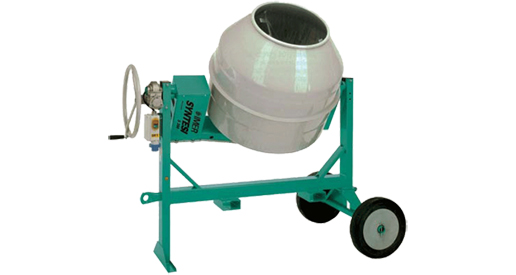Tools and Equipment
7. Hazards from the use of cement mixers
The cement mixer is a machine used to manufacture mortars and concrete via the mixing of different components such as aggregates of different sizes and basically cement.
It is composed of a chassis and a cylindrical vessel that is made to turn by means of the power transmitted by an electric or petrol-driven motor.
Most common hazards:
- Becoming trapped due to the lack of protection of the casing.
- Electric shocks.
- Overstrain.
- Blows by moving elements.
- Airborne powder.
- The mixer overturning and knocking into someone when being transported.
Preventive measures:
- Check the state of the leads, lever and accessories regularly, as well as the safety devices.
- The mixer is to be situated on a flat, horizontal surface.
- Mobile parts are to be protected by casings.
- It should have an earth connected to the general earth.
- Under no concept whatsoever insert your arm or a shovel into the drum when it is moving.
- It is to be left immobilised by means of the corresponding mechanism once the job has finished.
- It is not to be situated at less than 3 metres from the edge of an excavation so as to avoid the risk of it falling onto another level.
Collective protection:
- CE Mark.
- The drive elements of cement mixers have to be protected by means of a metal casing so as to avoid the risk of becoming trapped.
- The drum should be equipped with a tipping brake to avoid overstrain and risks owing to uncontrolled movements.
- The casings and other metallic parts or cement mixers are to be earthed.
- They are to be equipped with an emergency stop button.
Personal protection equipment:
- Safety Helmet.
- Anti-dust safety goggles and rubber or PVC gloves.
- Waterproof suits.





